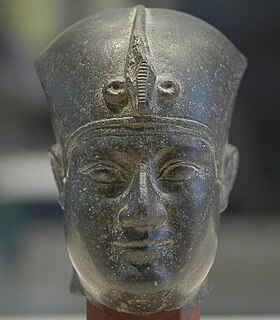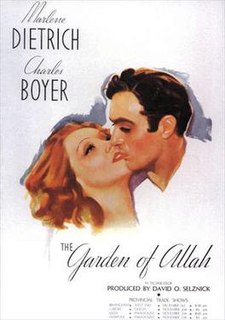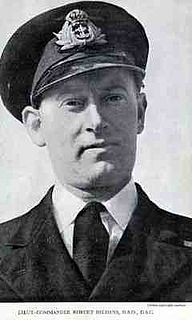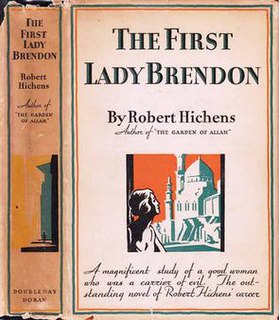
Mahmoud Sami Al Baroudi was a significant Egyptian political figure and a prominent poet. He served as 5th Prime Minister of Egypt from 4 February 1882 until 26 May 1882. He was known as rab alseif wel qalam رب السيف و القلم. His father belonged to an Ottoman-Egyptian family while his mother was a Greek woman who converted to Islam upon marrying his father.

Nectanebo II was the last native ruler of Egypt, as well as the third and last pharaoh from the Thirtieth Dynasty of Egypt. He reigned from 358 to 340 BC.

The Thirtieth Dynasty of Egypt is usually classified as the fifth Dynasty of the Late Period of ancient Egypt. It was founded after the overthrow of Nepherites II in 380 BC by Nectanebo I, and was disestablished upon the invasion of Egypt by the Achaemenid emperor Artaxerxes III in 343 BC. This is the final native dynasty of ancient Egypt; after the deposition of Nectanebo II, Egypt fell under foreign domination.

The Late Period of ancient Egypt refers to the last flowering of native Egyptian rulers after the Third Intermediate Period in the 26th Saite Dynasty founded by Psamtik I, but includes the time of Achaemenid Persian rule over Egypt after the conquest by Cambyses II in 525 BC as well. The Late Period existed from 664 BC until 332 BC, following a period of foreign rule by the Nubian 25th Dynasty and beginning with a short period of Neo-Assyrian suzerainty, with Psamtik I initially ruling as their vassal. The period ended with the conquests of the Persian Empire by Alexander the Great and establishment of the Ptolemaic dynasty by his general Ptolemy I Soter, one of the Hellenistic diadochi from Macedon in northern Greece. With the Macedonian Greek conquest in the latter half of the 4th century BC, the age of Hellenistic Egypt began.

Robert Hichens was a British sailor who was part of the deck crew on board the RMS Titanic when she sank on her maiden voyage on 15 April 1912. He was one of six quartermasters on board the vessel and was at the ship's wheel when the Titanic struck the iceberg. He was in charge of Lifeboat #6, where he refused to return to rescue people from the water according to several accounts of those on the boat, including Margaret Brown, who argued with him throughout the early morning. In 1906, he married Florence Mortimore in Devon, England; when he registered for duty aboard the Titanic, his listed address was in Southampton, where he lived with his wife and two children.

Nectanebo I was an ancient Egyptian pharaoh, founder of the last native dynasty of Egypt, the 30th.

Djedhor, better known as Teos or Tachos, was an ancient Egyptian pharaoh of the 30th Dynasty.

Robert Hichens was an English journalist, novelist, music lyricist, short story writer, music critic and collaborated on successful plays. He is best remembered as a satirist of the "Naughty Nineties".

The Garden of Allah is a 1936 American adventure drama romance film directed by Richard Boleslawski, produced by David O. Selznick, and starring Marlene Dietrich and Charles Boyer. The screenplay was written by William P. Lipscomb and Lynn Riggs, who based it on the 1904 novel of the same title by Robert S. Hichens. Hichens's novel had been filmed twice before, as silent films made in 1916 and 1927. The supporting cast of the sound version features Basil Rathbone, C. Aubrey Smith, Joseph Schildkraut, John Carradine, Alan Marshal, and Lucile Watson. The music score is by Max Steiner.

Edith Maud Hull was a British writer of romance novels, typically credited as E. M. Hull. She is best known for The Sheik, which became an international best seller in 1921. The Sheik is credited with setting off a major and hugely popular revival of the "desert romance" genre of romantic fiction. Hull followed The Sheik with several other novels with desert settings, such as The Shadow of the East, The Desert Healer, and The Sons of the Sheik.

The Sheik is a 1919 novel by E. M. Hull, an English novelist of the early twentieth century. It was the first of a series of novels she wrote with desert settings that set off a major revival of the "desert romance" genre of romantic fiction. It was a huge best-seller and the most popular of her books, and it served as the basis for the film of the same name starring the Italian actor Rudolph Valentino in the title role.
Belladonna or Bella Donna may refer to:
The Fruitful Vine is a 1921 British silent drama film directed by Maurice Elvey and starring Basil Rathbone, Valia and Irene Rooke. From the silent era, probably the most notable thing about the film was an early appearance of British actor Rathbone, who was later to become famous for his portrayal of Sherlock Holmes. It is an adaptation of the 1911 novel The Fruitful Vine by Robert Hichens.
John Knittel, originally Hermann Emanuel Knittel was a Swiss writer.

The Garden of Allah is a 1927 American silent romantic drama film directed by Rex Ingram, his final film for Metro-Goldwyn-Mayer. The film stars Ingram’s wife, actress Alice Terry and Iván Petrovich. It is the second version of the Robert Hichens 1904 British novel of the same name, which had been filmed by the Selig Polyscope Company in 1916 with Helen Ware and would be filmed again in 1936 with Marlene Dietrich and Charles Boyer.

Lieutenant Commander Robert Peverell Hichens, was the most highly decorated officer of the Royal Navy Volunteer Reserve (RNVR), being awarded two Distinguished Service Orders, three Distinguished Service Crosses and three Mentions in Despatches. He was also recommended for a Victoria Cross after being killed in action in April 1943.

Temptation is a 1946 American film noir thriller film directed by Irving Pichel and starring Merle Oberon, George Brent, Charles Korvin and Paul Lukas. The film was based on Robert Smythe Hichens's 1909 novel Bella Donna.

Barbary Sheep is a 1917 American silent drama film produced by Famous Players-Lasky and distributed through Artcraft Pictures, an affiliate of Paramount Pictures. The film was directed by Maurice Tourneur and stars Elsie Ferguson in her motion picture debut. This picture is said to have George M. Cohan in his film debut as well. It is an adaptation of the 1907 novel Barbary Sheep by British writer Robert Hichens. It was thought to be a lost film until an 8-minute clip was found in the Gosfilmfond archive.

Bella Donna is a 1909 British novel by the British writer Robert Hichens. A flighty young Englishwoman marries an Egyptologist. Once on the archaeological site she falls for a suave Egyptian, and plots to do away with her husband.

The First Lady Brendon is a 1931 novel by the British writer Robert Hichens. A woman tries to escape from her disastrous first marriage. Much of the novel takes place in Egypt, a popular setting in the author's novels.

















